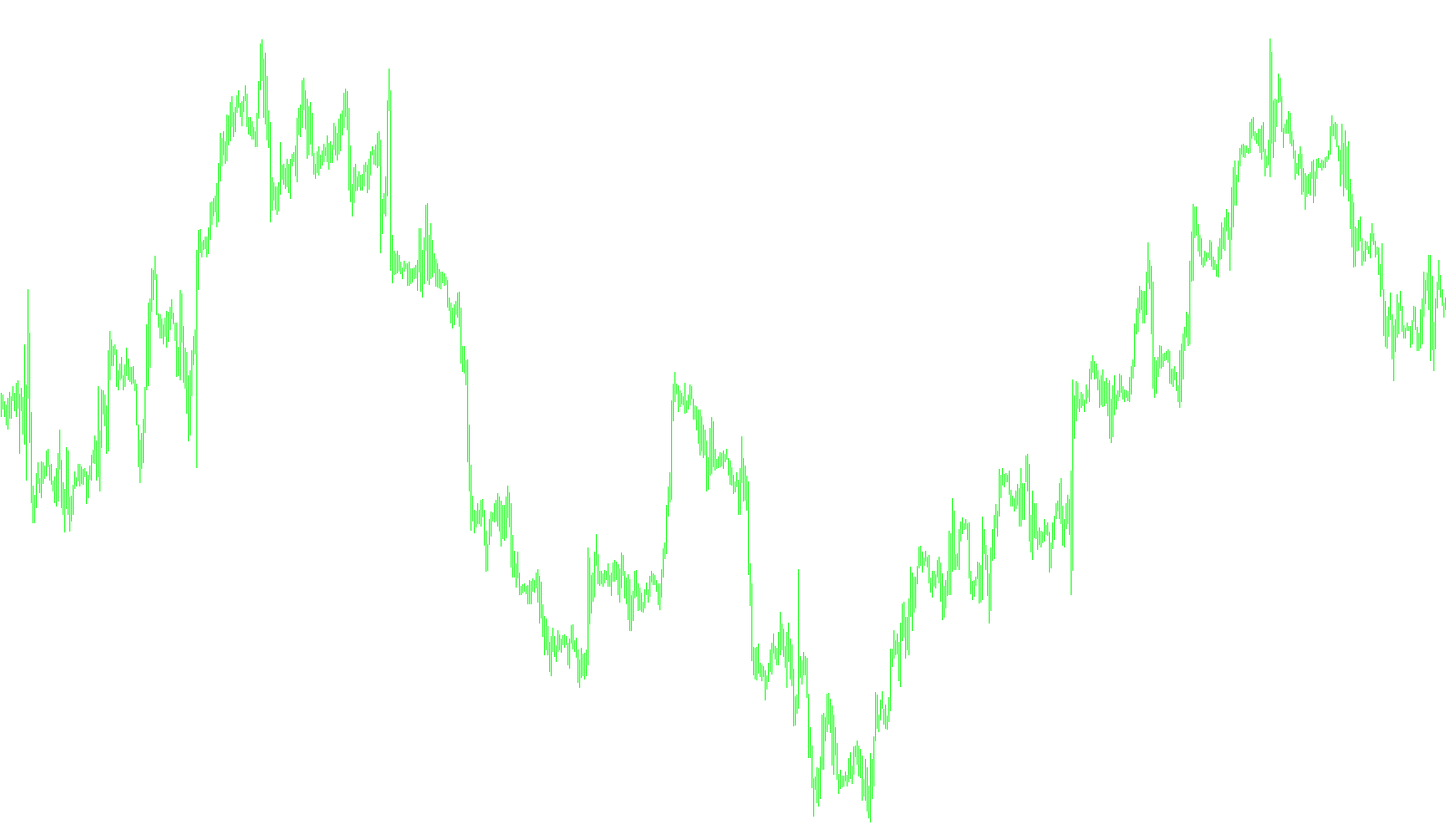
//Èíäèêàòîð ïîêàçûâàåò îòíîñèòåëüíóþ äëèíó âîñõîäÿùåãî òðåíäà.
//+------------------------------------------------------------------+
//| RelUpTrLen_....mq4 |
//| Author: Martes |
//| http://championship.mql4.com/2007/ru/users/Martes/ |
//+------------------------------------------------------------------+
#property copyright "Martes"
#property link "http://championship.mql4.com/2007/ru/users/Martes/"
//Fix minimum (0) and maximum (1) levels manually. Levels below do not work.
#property indicator_level1 0
#property indicator_level2 1
#property indicator_levelcolor LimeGreen
#property indicator_levelwidth 2
#property indicator_levelstyle 0
#property indicator_separate_window
#property indicator_buffers 1
#property indicator_color1 SeaGreen
#property indicator_width1 2
extern int barsToProcess=100;
extern int StartingBarNumber=0;
extern bool DrawForCandleBodies=true;
//---- buffers
double ExtMapBuffer1[];
//----
datetime ProcessedTime=0;
double CandleBodyMinimum(int CandleNumber)
{
return(MathMin(Open[CandleNumber], Close[CandleNumber]));
}
double CandleBodyMaximum(int CandleNumber)
{
return(MathMax(Open[CandleNumber], Close[CandleNumber]));
}
// isLeft(): tests if a point is Left|On|Right of an infinite line.
// Input: three points P0=(x0,y0), P1=(x1,y1), and P2=(x2,y2).
// Return: >0 for P2 left of the line through P0 and P1
// =0 for P2 on the line
// <0 for P2 right of the line
double isLeft( double x0, double y0, double x1, double y1, double x2, double y2) {
return( (x1-x0)*(y2-y0) - (x2-x0)*(y1-y0) );
}
//+------------------------------------------------------------------+
//| Custom indicator initialization function |
//+------------------------------------------------------------------+
int init()
{
//---- indicators
SetIndexStyle(0,DRAW_LINE);
SetIndexBuffer(0,ExtMapBuffer1);
//----
return(0);
}
//+------------------------------------------------------------------+
//| Custom indicator deinitialization function |
//+------------------------------------------------------------------+
int deinit()
{
//----
//----
return(0);
}
//+------------------------------------------------------------------+
//| Custom indicator iteration function |
//+------------------------------------------------------------------+
int start()
{
int counted_bars=IndicatorCounted();
//----
int limit;
//Variables for finding best up-trend
int Length, StartIdx, EndIdx,
BestLength=0, BestStartIdx, BestEndIdx;
datetime BestStartTime, BestEndTime;
double BestStartPrice, BestEndPrice;
//Do nothing if the current candle is already processed.
if(ProcessedTime==Time[StartingBarNumber])
{
return(0);
}
else //Process
{
ProcessedTime=Time[StartingBarNumber];
if(barsToProcess<=2)
{
if(barsToProcess<=1)
{
Print("Too few bars to calculate an up-trend");
return(0);
}
else
{
if(DrawForCandleBodies)
{
BestStartPrice=CandleBodyMinimum(StartingBarNumber+2);
BestEndPrice=CandleBodyMinimum(StartingBarNumber+1);
}
else
{
BestStartPrice=Low[StartingBarNumber+2];
BestEndPrice=Low[StartingBarNumber+1];
}
if(BestStartPrice>=BestEndPrice)
{
ExtMapBuffer1[0]=0;
Print("No up trend");
return(0);
}
BestStartTime=Time[StartingBarNumber+2];
BestEndTime=Time[StartingBarNumber+1];
}
}
else //Find an Up-Trend with a convex hull.
{
ProcessedTime=Time[StartingBarNumber];
int NumbersOfConvexHullVertices[], //To store indices (numbers) of Vertices in Convex Hull
ConvexHullIdx, //This points to the last valid element of NumbersOfConvexHullVertices
i;
ArrayResize(NumbersOfConvexHullVertices, barsToProcess);
double CandleBodyMinima[],
x0, y0,
x1, y1,
x2, y2;
ArrayResize(CandleBodyMinima, barsToProcess);
//Fill array CandleBodyMinima[] with values from
//the range StartingBarNumber+1 ... StartingBarNumber+barsToProcess of the chart
for(i=1; i<=barsToProcess; i++)
{
if(DrawForCandleBodies)
CandleBodyMinima[i-1]=CandleBodyMinimum(StartingBarNumber+i);
else
CandleBodyMinima[i-1]=Low[StartingBarNumber+i];
}
//Find the lower part of the convex hull for points (i, CandleBodyMinima[i]) of
//the plane
NumbersOfConvexHullVertices[0]=0;//This is the index of CandleBodyMinima[0]
ConvexHullIdx=0;//This says that NumbersOfConvexHullVertices[ConvexHullIdx] is valid.
NumbersOfConvexHullVertices[1]=1;//This is the index of CandleBodyMinima[1]
ConvexHullIdx=1;//NumbersOfConvexHullVertices[ConvexHullIdx] is still thought to be valid.
for(i=2; i<barsToProcess; i++)
{
ConvexHullIdx++;
NumbersOfConvexHullVertices[ConvexHullIdx]=i;//The new point is added in the hull.
//Now we will make the hull convex
x0=NumbersOfConvexHullVertices[ConvexHullIdx-2];
y0=CandleBodyMinima[NumbersOfConvexHullVertices[ConvexHullIdx-2]];
x1=NumbersOfConvexHullVertices[ConvexHullIdx-1];
y1=CandleBodyMinima[NumbersOfConvexHullVertices[ConvexHullIdx-1]];
x2=NumbersOfConvexHullVertices[ConvexHullIdx];
y2=CandleBodyMinima[NumbersOfConvexHullVertices[ConvexHullIdx]];
while( (isLeft(x0, y0, x1, y1, x2, y2)<=0) && (ConvexHullIdx>=2))
{
NumbersOfConvexHullVertices[ConvexHullIdx-1]=NumbersOfConvexHullVertices[ConvexHullIdx];
ConvexHullIdx--;
if(ConvexHullIdx>=2)//Enough points in the hull to process.
{
x0=NumbersOfConvexHullVertices[ConvexHullIdx-2];
y0=CandleBodyMinima[NumbersOfConvexHullVertices[ConvexHullIdx-2]];
x1=NumbersOfConvexHullVertices[ConvexHullIdx-1];
y1=CandleBodyMinima[NumbersOfConvexHullVertices[ConvexHullIdx-1]];
x2=NumbersOfConvexHullVertices[ConvexHullIdx];
y2=CandleBodyMinima[NumbersOfConvexHullVertices[ConvexHullIdx]];
}//if
}//while
}//for
//Find the longest up-trend
for(i=0; i<ConvexHullIdx; i++)
{
StartIdx=NumbersOfConvexHullVertices[i];
EndIdx=NumbersOfConvexHullVertices[i+1];
Length=EndIdx-StartIdx;
if(Length>BestLength &&
CandleBodyMinima[StartIdx]>CandleBodyMinima[EndIdx])
{
BestStartIdx=StartIdx;
BestEndIdx=EndIdx;
BestLength=Length;
}//if
}//for
if(BestLength==0)
{
ExtMapBuffer1[0]=0;
Print("No up trend");
return(0);
}
BestStartTime=Time[BestEndIdx+StartingBarNumber+1];
BestEndTime=Time[BestStartIdx+StartingBarNumber+1];
BestStartPrice=CandleBodyMinima[BestEndIdx];
BestEndPrice=CandleBodyMinima[BestStartIdx];
}//else //Find an Up-Trend with a convex hull.
ExtMapBuffer1[0]=(1.0*BestLength)/barsToProcess;
}//else Process
//----
return(0);
}
//+------------------------------------------------------------------+
Comments